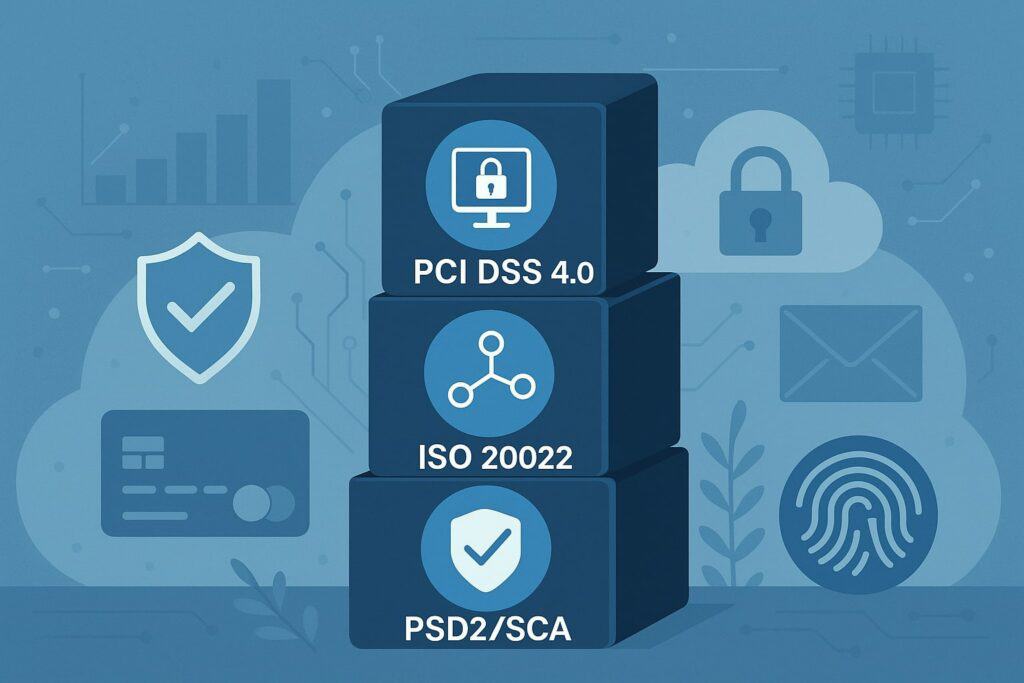
By crossborderfees October 11, 2025
Accepting payments in multiple currencies unlocks new markets, raises conversion rates, and helps your brand feel “local” to international customers. When you let buyers pay in their preferred currency, you reduce cognitive load, prevent checkout surprise, and simplify reconciliation across regions.
Yet succeeding with payments in multiple currencies is not just about toggling on extra FX codes. It demands deliberate operational design, a risk-aware pricing strategy, rigorous fraud and compliance controls, and constant optimization of the checkout experience.
This guide walks you through the latest, most practical best practices for accepting payments in multiple currencies across cards, wallets, and bank transfers.
You’ll learn how to pick the right currency model, minimize fees, meet evolving standards like PCI DSS 4.0, PSD2/SCA, and ISO 20022, and build a governance loop that keeps FX margins and chargebacks under control as you scale.
If global expansion is on your roadmap, mastering payments in multiple currencies is one of the highest-leverage steps you can take.
Why accepting payments in multiple currencies matters for global growth

Accepting payments in multiple currencies improves conversion because buyers mentally anchor prices in their own currency. That familiarity lowers friction, reduces cart abandonment, and makes your value proposition clearer.
It also leads to cleaner finance and tax workflows when you reconcile revenue by market. From a brand perspective, offering payments in multiple currencies signals that you truly serve international customers—not as an afterthought, but as a core promise.
In subscription businesses, it can even reduce involuntary churn by reducing bank declines tied to cross-border flags. Merchants often see better authorization rates when they combine payments in multiple currencies with “local rails” (local acquiring and domestic schemes), because issuing banks prefer domestic-looking transactions.
When you layer in methods like domestic bank transfers, local wallets, and region-specific BNPL, accepting payments in multiple currencies stops being a cost center and becomes a growth engine.
The key is to track authorization rates, FX costs, and chargebacks by currency and country, then reinvest savings into pricing, support, and localized checkout content—so “accepting payments in multiple currencies” compounds your competitive moat over time.
Decide your currency model: multi-currency pricing vs. dynamic currency conversion vs. cross-border pricing

Choosing how you present and settle currency is foundational. Most merchants mix three approaches. With multi-currency pricing (MCP), you publish price lists in target currencies and settle in those currencies; you control the FX strategy and can smooth margins.
Dynamic currency conversion (DCC) allows the cardholder to choose conversion at the point of interaction; while it can be convenient, it demands careful transparency and compliance with scheme rules.
Cross-border pricing means you show a local-looking price but settle in your home currency; it’s simpler operationally, but can create unpredictable cardholder bills due to issuer FX.
For high-AOV or subscription products, MCP typically delivers the best customer experience and revenue predictability, because accepting payments in multiple currencies feels truly local and shields buyers from issuer FX swings.
If you do enable DCC, provide clear rate disclosures and let customers opt out easily—card networks require explicit transparency on rates and markups, along with specific receipt language and screen flows.
Mastercard’s current DCC performance guidance points to concrete POI, receipt, and signage requirements that merchants and providers must follow to stay compliant.
Multi-currency pricing (MCP): when you should own the FX—and how to do it well
With MCP, you pre-set prices in the buyer’s currency, typically updating exchange rates on a schedule (e.g., daily) and baking an FX buffer into the list price. This approach is ideal when you prioritize predictable display prices, want to maximize acceptance by avoiding issuer conversion, and need to settle funds natively for hedging or local payouts.
The best practice is to define an FX governance policy: choose a reputable rate source (e.g., mid-market plus a small, disclosed margin), set automatic guardrails for volatile pairs, and maintain a centralized pricing calendar.
That way, your team can keep “accepting payments in multiple currencies” stable even when markets are choppy. Technically, map each currency to a settlement account to avoid hidden conversion fees; if your PSP supports multi-currency settlement, reconcile at the currency level.
Finance should run monthly variance analysis: compare realized margins per currency to your buffer and adjust. For customer trust, disclose that localized prices include conversion and fees.
Finally, monitor authorization rates by currency and BIN country; if a currency underperforms, consider adding a local acquirer to turn cross-border transactions into domestic ones.
Dynamic currency conversion (DCC): transparency, consent, and compliance come first
DCC offers an on-the-spot choice to pay in the cardholder’s billing currency. It can be useful in travel, hospitality, and POS where tourists appreciate familiarity. But DCC requires disciplined execution.
Card brands mandate explicit disclosures of the exchange rate, markups, and the comparative cost versus paying in local currency. Your POS or gateway flow must present a clear opt-in choice—no pre-ticked boxes, no “dark patterns.” Receipts must include mandated phrases and data fields; screens should follow network-approved templates.
Mastercard’s current DCC guide points to Transaction Processing Rules Section 3.8 (POI Currency Conversion) and Appendix F for signage and receipt text, which your provider should implement to the letter. Build a QA checklist and mystery-shop your own flows in key markets to ensure staff and software follow the rules.
If you are serious about accepting payments in multiple currencies via DCC, track dispute ratios on DCC vs. non-DCC transactions and watch for regulatory scrutiny around perceived consumer detriment; be ready to disable DCC for corridors where complaints or chargebacks tick up.
Cross-border pricing: the “minimum viable” option and its trade-offs
Cross-border pricing shows indicative local amounts but settles in your home currency, leaving conversion to the card issuer. It’s the simplest way to begin accepting payments in multiple currencies because you avoid currency accounts and FX management.
However, your customer’s final statement amount may differ due to issuer FX and fees, which can erode trust or trigger disputes. To mitigate, disclose that final billing occurs in the merchant currency and that issuers may apply their own rates and fees.
At checkout, highlight a toggle to switch to your settlement currency so buyers can see the exact charge if they prefer certainty. Operationally, monitor refund experiences; issuer FX can cause customers to receive less on refunds than they paid originally.
If this leads to support friction, consider migrating those markets to MCP or adding a local acquirer so transactions are processed domestically. Cross-border pricing can be a useful stepping stone, but as volumes rise, most merchants shift toward MCP to improve customer experience and reduce downstream costs in their broader program of accepting payments in multiple currencies.
Build a compliant, future-proof stack: PCI DSS 4.0, PSD2/SCA, and ISO 20022

Compliance isn’t optional when accepting payments in multiple currencies. At minimum, you need a PCI DSS program, strong customer authentication for European transactions, and a roadmap aligned with ISO 20022 for richer payment data and reconciliation.
PCI DSS 4.0 became the sole active version in 2024, with several future-dated controls becoming mandatory on March 31, 2025; merchants and service providers should have transitioned by that date and validated new requirements thereafter.
This includes changes around authentication, multi-factor access, targeted risk analyses, and custom testing approaches. Staying on top of these dates reduces audit surprises and keeps your card acceptance stable across regions.
What PCI DSS 4.0 means for merchants handling multiple currencies
PCI DSS 4.0 modernizes controls to match today’s threat landscape. For merchants accepting payments in multiple currencies—often through multiple acquirers and gateways—scope management becomes critical.
Segment cardholder-data environments (CDE) by region where practical; ensure MFA for administrative access; and maintain up-to-date network diagrams including cross-border data flows to each PSP.
If you use tokenization or a hosted payment field, confirm your provider’s attestation of compliance (AOC) covers the currencies and regions you’ll activate, then document your own residual obligations such as vulnerability scans, logging, and incident response drills.
The future-dated requirements that became mandatory after March 31, 2025, include more prescriptive controls for authentication and risk-based testing—plan remediation windows around product seasonality to avoid revenue risk.
Treat your annual PCI cycle as a governance engine for accepting payments in multiple currencies: review acquirer connections, prune unused currencies, rotate keys, refresh access, and re-test fallback flows before peak seasons.
PSD2/SCA: designing European checkouts that still convert
If you sell to the EEA or UK, PSD2’s Strong Customer Authentication applies to most e-commerce card payments. SCA requires two independent factors (knowledge, possession, inherence) except when an exemption (e.g., low-value, TRA, MIT) is properly applied.
The best practice is to adopt EMV 3-D Secure (3DS2) with a smart exemption strategy managed by your gateway or acquirer. Use risk-based routing to send low-risk transactions with TRA/TLR exemptions, and fall back to challenge flow when issuers insist.
Pre-authenticate subscriptions with recurring/MIT flags so future charges qualify as SCA-exempt. Communicate clearly on challenge screens, support one-time passcodes and bank app approvals, and anticipate higher friction for first-time cross-border buyers. Many PSPs now expose issuer-level SCA insights so you can tune your logic per corridor.
For content accuracy, remember that SCA has been in force in the EU since 2019, with ongoing optimizations by issuers and PSPs; plan your tests around local banking app UX to avoid conversion dips while accepting payments in multiple currencies.
ISO 20022 and SWIFT gpi: richer data, faster cross-border settlement
If you accept international bank transfers or offer invoicing alongside cards, align your treasury and ERP with ISO 20022. The SWIFT community began migrating cross-border FI-to-FI flows in 2023, with coexistence scheduled to end on 22 November 2025.
ISO 20022 provides structured remittance fields that significantly improve reconciliation, while SWIFT gpi adds end-to-end tracking and speed improvements that make wire payments more transparent.
For accepting payments in multiple currencies via bank rails, ensure your banks and payment providers support ISO 20022 pain/pacs/camt messages and gpi tracking, and update your AR systems to ingest richer remittance data.
Doing so reduces unapplied cash, accelerates cash application, and lowers support tickets from mismatched transfers. As the November 2025 deadline approaches, adoption is accelerating across vendors; keeping your ERP and bank interfaces current will future-proof your global receivables program and enhance the reliability of payments in multiple currencies.
Optimize checkout UX for each market while maintaining a unified brand
A single global checkout rarely fits all. Localize currency, language, address formats, and phone inputs; offer popular local methods (e.g., iDEAL, Sofort, PIX, BLIK) alongside cards; and automatically detect the buyer’s locale while letting them switch currencies without losing cart state.
Display tax and duties clearly—especially for DDP/DUA scenarios—to prevent “landed cost” surprises. Format prices according to regional conventions (decimal separators, currency symbol placement), and keep amounts consistent across PDP, cart, checkout, and email/SMS receipts.
For accepting payments in multiple currencies via mobile apps, preload supported currencies and exchange rates client-side, then confirm server-calculated totals to prevent tampering. If you offer DCC, place the currency choice step near payment confirmation, present both options neutrally, and show the exact exchange rate and markup.
For subscriptions, allow customers to keep their billing currency when they move countries, or provide a self-serve currency-switch flow that explains how future invoices and coupons will be handled.
A/B test copy and button labels in each language; small changes like “Pay securely” vs. “Complete order” can shift conversion for first-time cross-border buyers who may be wary of fraud when paying in multiple currencies.
Performance, retries, and smart routing: the invisible boosters of acceptance
International transactions often traverse extra hops—issuer, network, acquirer, gateway, risk provider—so milliseconds matter. Use connection pooling, HTTP/2, and idempotent keys for payment API calls; implement automatic retries with exponential backoff for network-level errors, but never retry after a hard issuer decline.
Acceptance jumps when you route transactions to a local acquirer that matches the card’s BIN country; if your PSP allows, configure rules that send Brazilian BINs to a BR acquirer in BRL, UK BINs to a UK acquirer in GBP, etc.
Tokenize cards to reduce false declines on recurring payments and leverage network tokenization for lifecycle management (PAN/expiry updates). Track soft declines tied to SCA; if an issuer requests step-up, present 3DS2 immediately.
Centralize logs for declined transactions and classify by reason codes to identify corridors where acceptance is weak. Above all, keep payment SDKs current; new scheme features and SCA optimizations ship frequently and can lift the success of accepting payments in multiple currencies without any UX changes at all.
Fraud, disputes, and risk scoring across currencies
Fraud patterns vary by corridor and currency. Start by segmenting risk models by country and currency pair (e.g., USD→MXN, EUR→SEK) and tune thresholds separately. Combine device signals, issuer response codes, and velocity rules with consortium data.
For subscriptions, watch for friendly fraud after introductory offers and for refund abuse when FX moves significantly post-purchase. DCC transactions can draw scrutiny if customers perceive higher costs; make disclosures bulletproof and archive receipt artifacts to contest disputes.
Maintain a rule to block ISO country/currency mismatches that indicate BIN abuse. Use negative lists sparingly; instead, build allowlists for trusted B2B buyers and enable SCA exemptions on those cohorts.
Your chargeback playbook should include reason-code-specific evidence templates in each language, mapping to scheme rules. Review win rates monthly by currency and adjust descriptors, shipping SLAs, and notification templates to bring down disputes while keeping accepting payments in multiple currencies friction-light for good customers.
Control FX and fees: pricing, hedging, and treasury operations
The economics of accepting payments in multiple currencies hinge on FX and fees. List prices should incorporate a small, stable FX buffer that covers conversion costs and volatility while keeping you competitive.
Treasury can hedge forecasted receipts in major currencies, while leaving long-tail currencies on auto-conversion with safeguards. Negotiate blended processing rates separately for domestic vs. cross-border volumes; domestic acquiring typically reduces scheme and interchange components.
Where you settle in multiple currencies, open currency accounts to avoid forced conversions and to pay local vendors and tax authorities directly. For bank transfers, adopt ISO 20022 messages to carry structured remittance and fees; combine with SWIFT gpi to track charges and delivery times end-to-end.
BIS analysis and industry data show gpi’s impact on speed and transparency, which in turn improves order-to-cash predictability for international receivables. Create dashboards that show realized FX spread, per-currency processing cost, and DSO by corridor; then prune currencies with poor economics or move them to on-request pricing.
This turns accepting payments in multiple currencies into a managed profit center, not a cost of doing business.
Tax, invoicing, and accounting alignment
Accounting complexity can explode if you scale payments in multiple currencies without a plan. Align ERP, billing, and payment systems on currency codes (ISO-4217), decimal precision, rounding rules, and exchange-rate sources.
For subscription changes mid-cycle, define how credits and proration are computed across currencies; document this in customer-facing policies to avoid disputes.
Ensure your invoice templates show the transaction currency and any tax/VAT breakdowns required locally; in the EU, keep VAT OSS/IOSS logic consistent with the buyer’s ship-to country—displaying a clean, tax-inclusive price in the local currency reduces confusion.
For refunds, apply the original exchange rate to keep the customer whole where legally required; if you must refund in your settlement currency, disclose that the card issuer’s FX may result in minor differences.
Reconciliation will be easier if your bank feeds support ISO 20022 camt statements; with gpi tracking, you can match incoming cross-border wires to invoices quickly and reduce “unapplied cash.”
When accepting payments in multiple currencies, finance, tax, and support teams should share a quarterly review to spot avoidable fees and tune policies before peak seasons.
Governance and monitoring: KPIs that keep your global program healthy
Treat accepting payments in multiple currencies as a product with a roadmap. Your KPI set should include: authorization rate by currency and BIN country; chargeback rate by reason code and currency; average processing cost per successful order; realized FX margin vs. target; refund delta (paid vs. refunded amount due to FX); and SCA challenge rate and completion rate for EEA/UK.
Add operational SLAs like gateway latency, PSP uptime, and bank transfer delivery times per corridor (SWIFT gpi data can help here). Run monthly business reviews with payment providers; request corridor-level analytics and SCA outcome reports.
Audit checkout and PSP settings quarterly: remove stale test currencies, validate DCC texts and receipts, and rotate API credentials. Watch the standards calendar—e.g., PCI DSS 4.0 post-March 2025 controls, ISO 20022 milestones, and local regulatory updates—to avoid last-minute scrambles.
Finally, keep a “market expansion checklist” for new countries: supported currencies and methods, acquiring plan, tax setup, fraud rules, KYC/AML considerations for payouts, support scripts, and monitoring dashboards. This discipline ensures accepting payments in multiple currencies stays robust as you expand.
Partner selection and contracts: get the fine print right
Your partners—PSPs, acquirers, FX providers—determine much of your success with payments in multiple currencies. Beyond price, evaluate their local acquiring footprint, SCA performance in Europe, DCC compliance templates, ISO 20022 readiness, SWIFT gpi support, and the clarity of their settlement and refund rules.
Ask for corridor-level auth rates, SCA challenge success, and dispute win rates. In contracts, negotiate corridor-specific pricing, FX spreads, minimum monthly commitments tied to realistic ramp schedules, and SLAs for incident response.
Ensure you can export raw transaction logs (with currency, BIN, issuer country, auth/decline codes) and that tokens are portable if you ever exit.
For DCC, require that screens and receipts follow brand-approved language and that any marketing claims are backed by scheme documentation; Visa and Mastercard publish requirements and merchant rules that your provider should reference and implement.
When you prioritize these criteria, accepting payments in multiple currencies becomes durable, auditable, and cost-efficient across changing markets.
FAQs
Q.1: What’s the difference between multi-currency pricing and DCC, and which is better for my business?
Answer: Multi-currency pricing (MCP) means you set and display prices in the shopper’s currency and typically settle funds in that currency. You own the FX strategy and can smooth margins, which often leads to higher trust and fewer billing surprises.
Dynamic currency conversion (DCC), by contrast, offers a conversion choice at checkout or POS, converting in real time and settling in the cardholder’s billing currency. DCC can be handy for travel and in-person scenarios but requires strict transparency and consent flows.
Card brands mandate specific screen text, receipts, and signage so customers understand rates and markups. As a rule of thumb, for e-commerce and subscriptions, MCP tends to deliver better long-term CX and fewer disputes because accepting payments in multiple currencies feels native.
If you pilot DCC, watch dispute ratios, ensure brand-compliant UX, and give customers a clear opt-out. Many merchants ultimately run MCP for web and app channels and reserve DCC for specific POS use cases with a mobile traveler profile.
Q.2: Do I need to change anything for PCI DSS 4.0 if I’m already compliant with 3.2.1?
Answer: Yes—PCI DSS 4.0 became the only active version in 2024, and several future-dated controls turned mandatory on March 31, 2025. Even if you were compliant with 3.2.1, you’ll need to address new requirements such as expanded authentication measures, targeted risk analysis for certain controls, and more flexible but evidence-backed testing approaches.
Review your scope across acquirers, gateways, and regions because accepting payments in multiple currencies often increases your CDE complexity. Coordinate with your PSPs for updated AOCs, roll out MFA where missing, refresh network diagrams, and schedule your external scans and pentests to align with your reporting cycle.
Treat this as an opportunity to prune unused currency configurations and rotate keys and credentials. Staying ahead of PCI DSS 4.0 keeps your global acceptance stable and avoids audit-related disruptions to payments in multiple currencies.
Q.3: How does PSD2 Strong Customer Authentication affect European conversions?
Answer: SCA requires two-factor authentication for most EU/UK e-commerce card transactions, with exemptions like TRA for low-risk payments, low-value thresholds, and MIT/recurring scenarios.
To protect conversion while accepting payments in multiple currencies, implement EMV 3-D Secure (3DS2), apply exemptions where allowed, and fall back to challenges when issuers demand them.
Work closely with your gateway to enable risk-based routing and issuer-specific optimization; some issuers are more likely to approve frictionless flows than others. Also, fine-tune your checkout copy to explain authentication steps—especially for first-time cross-border shoppers who may be unfamiliar with their bank’s approval app.
Done right, SCA compliance can coexist with healthy conversion and lower fraud. Keep in mind SCA has been in force since 2019; use provider documentation and EU sources to ensure your logic matches current expectations as you continue accepting payments in multiple currencies.
Q.4: Why should my finance team care about ISO 20022 and SWIFT gpi?
Answer: ISO 20022 standardizes and enriches payment message data, and SWIFT gpi adds real-time tracking to cross-border transfers. For finance leaders, that means faster, clearer reconciliation, fewer suspense items, and better cash visibility.
With ISO 20022, remittance information is structured—making it easier to auto-match incoming wires to invoices. With gpi, you can see where a payment sits, who took fees, and when funds will land, which reduces working-capital uncertainty.
Because coexistence for cross-border FI-to-FI messages ends on 22 November 2025, now is the time to align ERP imports, bank file formats, and provider integrations.
If accepting payments in multiple currencies includes bank transfers, these upgrades directly cut DSO and support tickets from “lost” wires. Ask your banks and PSPs for ISO 20022 camt/pacs support and gpi service-level reporting, and include adoption milestones in your 2025 roadmap.
Conclusion
Accepting payments in multiple currencies is more than a checkout toggle—it’s a strategic capability that touches product, pricing, compliance, risk, and finance. The merchants that win treat it as a program with clear KPIs, market-by-market roadmaps, and strong provider governance.
Choose currency models deliberately (MCP for predictability, DCC for specific POS use cases, cross-border pricing only as a bridge), and back them with transparent disclosures that build trust.
Keep your stack compliant and future-ready with PCI DSS 4.0 controls, PSD2/SCA optimization in Europe, and ISO 20022 + SWIFT gpi for bank rails. Localize UX and methods, route transactions domestically where possible, and measure everything from auth rates to realized FX margins.
When you do, payments stop being a cost and start being a growth lever—helping you convert more customers, keep more revenue, and expand internationally with confidence while continuously accepting payments in multiple currencies.